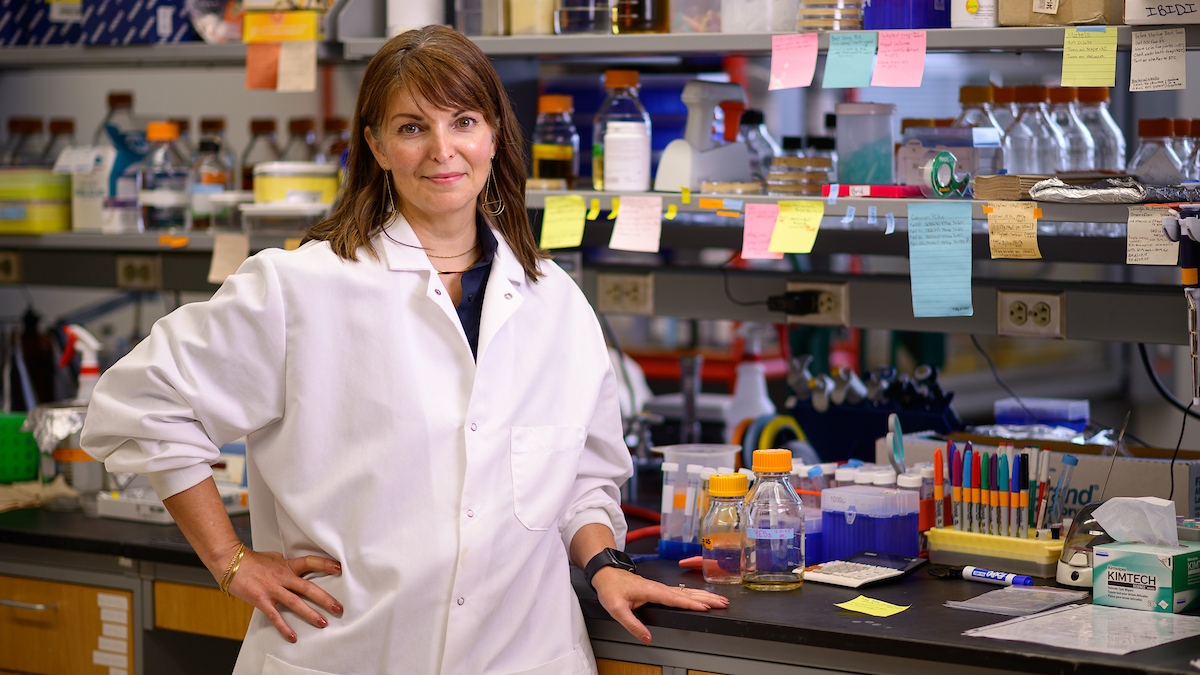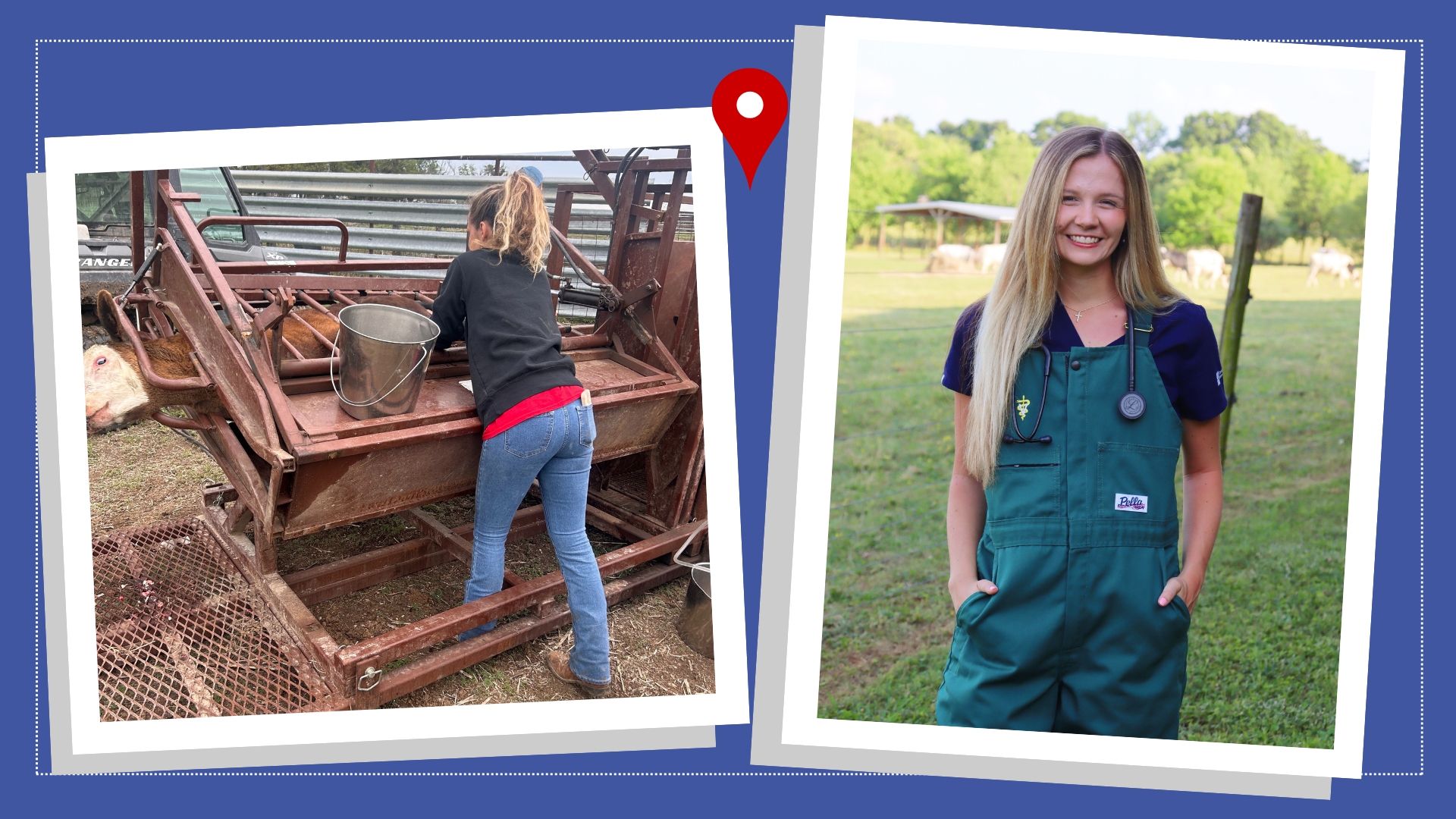Epidemiology Expert on Spread of Porcine Epidemic Diarrhea Virus

Porcine epidemic diarrhea virus (PEDV) is a pig disease that does not affect people or other animals, nor is it a food safety concern. It can often be fatal to very young pigs and sicken older hogs. The disease was first detected in mid-May and has spread through several states including North Carolina. PEDV information is being updated daily.

Barrett Slenning, an associate professor in the NC State College of Veterinary Medicine’s Department of Population Health and Pathobiology, is an expert in epidemiology and animal biosecurity risk management. Dr. Slenning answers questions and provides background on porcine epidemic diarrhea virus. [Listen to a podcast of a WPTF on-air interview with Dr. Slenning concerning the disease transcription].
[section_subtitle] What is PEDV? [/section_subtitle]
PEDV is an RNA, single strand, positive sense virus belonging to the family Coronaviridae. Coronaviruses exist worldwide in birds and mammals. They are divided into three sub-groups with Group 1 found in dogs, cats, pigs, and humans; Group 2 is in cattle, mice, pigs, birds, and humans; and Group 3 is found in birds. PEDV is a Group 1 coronavirus and is similar to, but genetically distinct from, Transmissable Gastroenteritis that affects older pigs.
PEDV was first identified in European pigs in the early 1970s, though it was not given the name PEDV until the later. It was prevalent through Europe in the 1980s and 1990s. The strains existing in Asia, especially Korea and China, appear to be mutations of the European strains, and cause more severe disease. The PEDV recently discovered in the United States is more than 99% identical to the Chinese strain of PEDV, and carries the more severe disease picture of that strain.
[section_subtitle] What does PEDV do to pigs? [/section_subtitle]
Pigs appear to be the only animal affected by PEDV; it does not infect people, nor is it a food safety issue. PEDV is easily spread via the fecal-oral route by pigs shedding the virus in bodily fluids. Acute diarrhea, vomiting, and dehydration begins within 12 to 36 hours of exposure. PEDV has existed in Europe and Asia for decades and the current version in the U.S. is believed to have come from China in April.
In the current outbreak, PEDV-caused disease is characterized by fast moving outbreaks of severe diarrhea and vomiting, where up to 100% of the herd is affected if there has been no previous exposure to PEDV. Death rates up to 100% have been reported in one to two-week old piglets. Older piglets are expected to recover but they suffer permanent performance losses, and therefore hurt the farm economy. Farms in which the disease has become endemic may see sporadic outbreaks, typically limited to suckling and recently weaned pigs.
[section_subtitle] How is PEDV treated and prevented in pigs? [/section_subtitle]
Pigs that become sick with this disease are treated symptomatically with supportive therapy aimed mostly at preventing dehydration. Very young pigs will often not respond to therapy, and so suffer elevated mortality. Globally, prevention of the disease can be accomplished through one or more types of vaccine programs, and through enhanced biosecurity to decrease the chance a herd is exposed. Vaccines, however, have seen mixed results, especially in Asia, because the Asian PEDV strain is dissimilar from the European strain which is the basis for most vaccines. Vaccines against PEDV are currently not available in the U.S. so right now officials recommend sanitation and strict biosecurity measures including herd closure to limit spreading the disease.
[section_subtitle] How did PEDV get to the United States? [/section_subtitle]
How the virus first arrived in our country has not yet been determined. PEDV seemed to appear in multiple distant herds within days. That would imply its spread within the country is through a source regularly used across the swine industry, but may not inform us on how it first got to our shores. Typically, disease agents will cross borders by one or more of the means identified in the acronym PAVES
“P” is for people. Humans can disseminate diseases in three ways. First, we can be infected—where the agent multiplies within our bodies—and we then shed the agent in a way that contaminates other people or animals. Influenza is transmitted this way. Second, humans can be contaminated—where the agent does not multiply within our own bodies—and we then shed the agent, allowing other humans or animals to become infected. Foot and Mouth Disease can be spread this way. Lastly, humans can spread an agent through mechanical means—our bodies or clothing or equipment is contaminated with living disease agents and then at a later time contacts a susceptible individual and infects them. Many diseases are spread this way.
“A” is for animals. Market movements of farm animals can spread disease, as can migrations of wild animals. As an example, tuberculosis is transmitted within domestic animal groups, within wildlife groups, and between domestic animals and wildlife.
“V” is for vector. A vector is a living entity that transmits a disease agent through doing what it normally does. Mosquitoes and ticks, for example, may transmit a number of diseases.
“E” is for ‘eats’. Food, feed, or water are often matrices that protect disease agents and, through the movement of the food or water, expose susceptible animals. Nearly all gastrointestinal diseases (e.g., , etc.) are Salmonella, Listeria, Cryptosporidia transmitted this way.
“S” is for ‘stuff’. ‘Stuff’ can be any object that can be contaminated and expose new susceptible species. The formal word for ‘stuff’ is ‘fomite’. Grooming supplies (brushes, combs) can transmit skin parasites or fungae. Feeding or eating implements (cups, spoons, buckets, water bowls) can be contaminated and therefore expose the next individuals using those implements.
Current thinking holds that the most likely way for PEDV to have come to the U.S. involves people bringing PEDV unintentionally into the country and exposing pigs through contaminated clothing or tools. Alternatively, we may have unknowingly imported contaminated tools or feeds. It is relatively unlikely that PEDV arrived in the through vectors or live animals. No potential is impossible, so none will be ignored, but investigative efforts will initially be spent on the most plausible factors.
[section_subtitle] How did PEDV spread quickly between several states?[/section_subtitle]
Once the agent arrived in the country any and all parts of the PAVES set of transmission means could result in the disease spreading across state lines. People moving from farm to farm are common means of disease distribution. Also, modern animal agriculture is highly mobile — piglets born on one farm often go to a different farm to be raised, sometimes crossing state borders to do so. Flies, through their exposure to virus-laden manure, could easily move the agent short distances, so vectors become a possibility. Feeds or feed components could become exposed to the virus and then be shipped to other farms. Tools, transportation vehicles, and shared equipment, are common means of transmitting disease.
Private farms, veterinarians, and companies involved in pig production and health are cooperating with state and federal agencies to investigate means by which this outbreak could have been started, and how it could be being maintained. Investigations are ongoing; a mid-July study out of the University of Illinois suggests transportation of animals and sites where moved animals collect are likely major means of the PEDV spread. Other studies are in process.
[section_subtitle] What is the current situation for PEDV?[/section_subtitle]
In the USA, PEDV was first described in farms in Iowa and Indiana in mid-May of 2013. Examination of banked samples suggests it may have made first incursion one month earlier. According to the American Association of Swine Veterinarians, by mid-July PEDV had been confirmed in Arkansas, Colorado, Illinois, Indiana, Iowa, Kansas, Michigan, Minnesota, Missouri, North Carolina, New York, Ohio, Oklahoma, Pennsylvania, South Dakota, and Texas. It continues to spread across the United States and as of July 20 was in more than 300 swine facilities in 15 or 16 states (reports differ in the number). Recent weekly reports suggest the rate of new infections is decreasing somewhat, perhaps due to farmers response activities. Nonetheless, PEDV is still expanding.
[section_subtitle] What is happening in North Carolina regarding PEDV?[/section_subtitle]
At this point three North Carolina pig herds have tested positive for PEDV. The first infected herds showed no obvious connections. As a result, we do not yet know how the agent got into our state. Investigations are ongoing.
State, federal, and private sector pig experts are working together to respond to this disease agent. Farms, farmers, and all individuals involved with pigs and pig health and welfare are being encouraged to enact their High Biosecurity plans to minimize the likelihood of encountering or spreading the disease further. Laboratories at the national and state level are able to test for this agent, increasing our knowledge of its extent throughout the U.S. Regular communications and briefings are occurring at the local, state, and national level to share information, best practices, and new discoveries.


